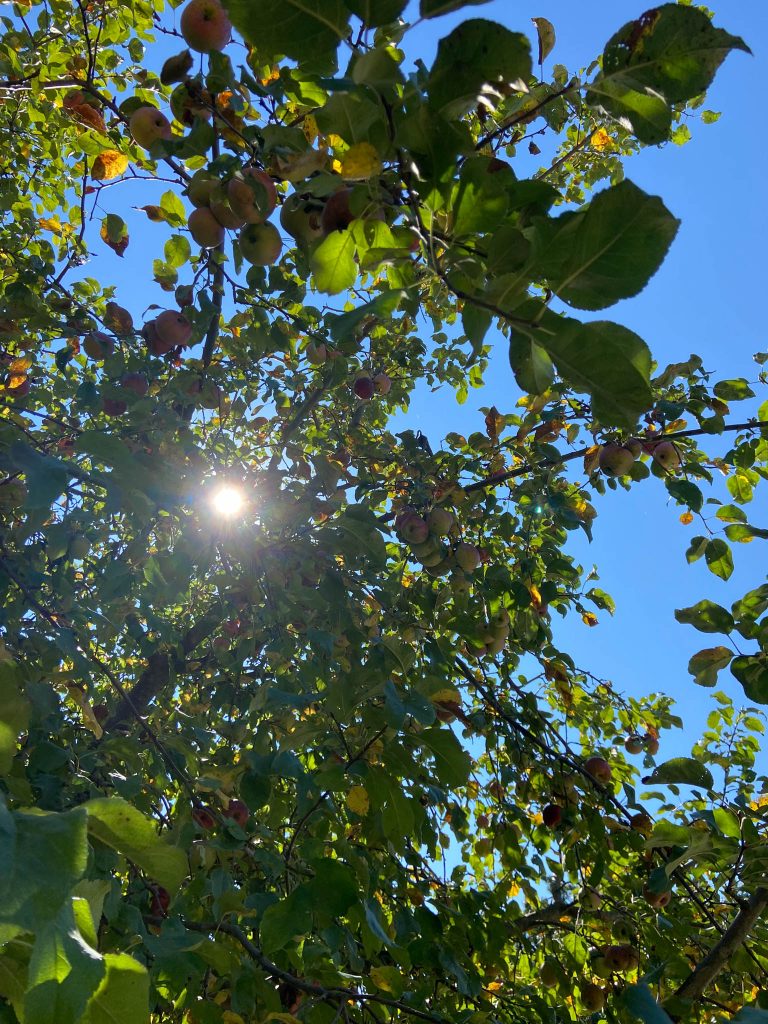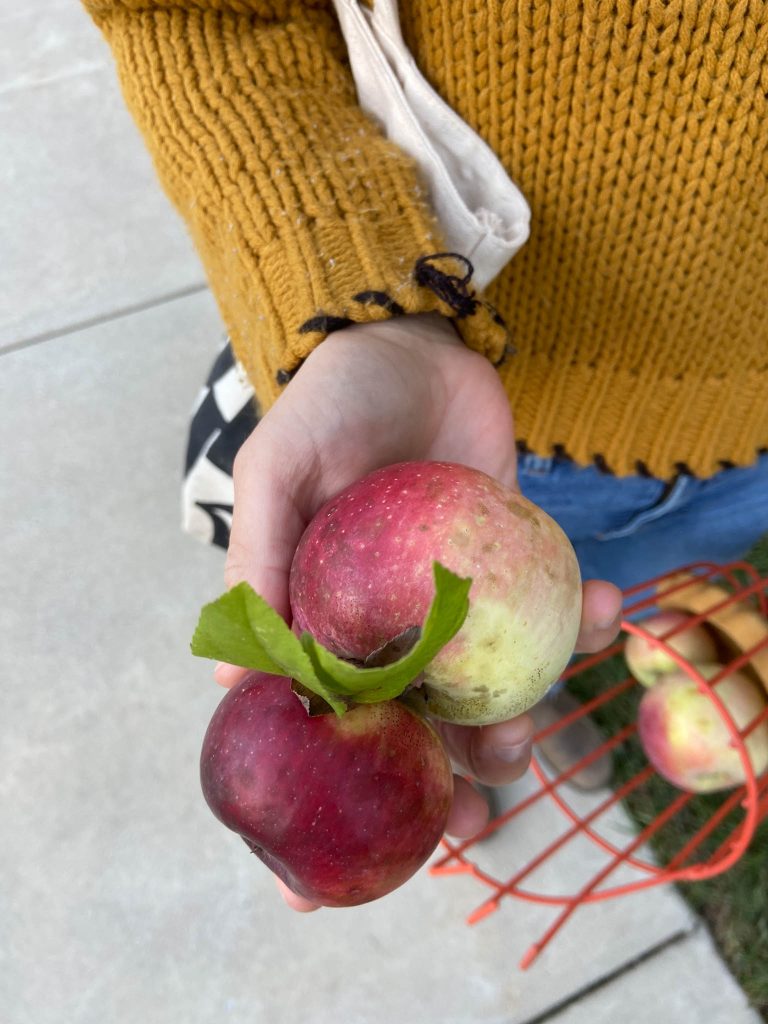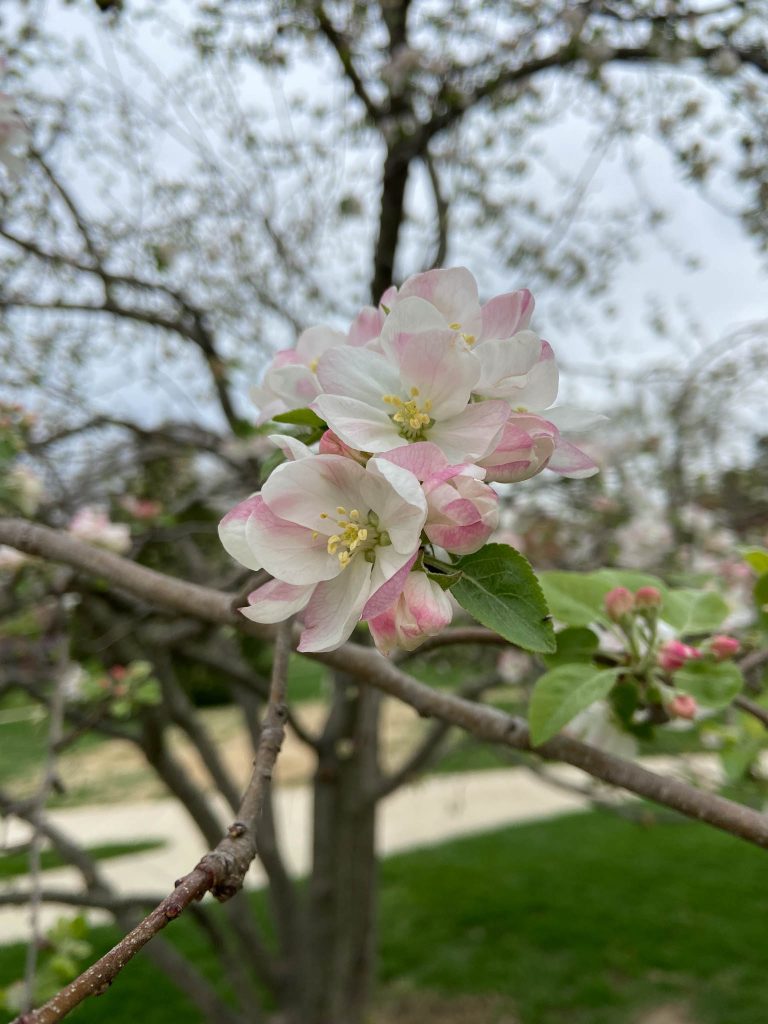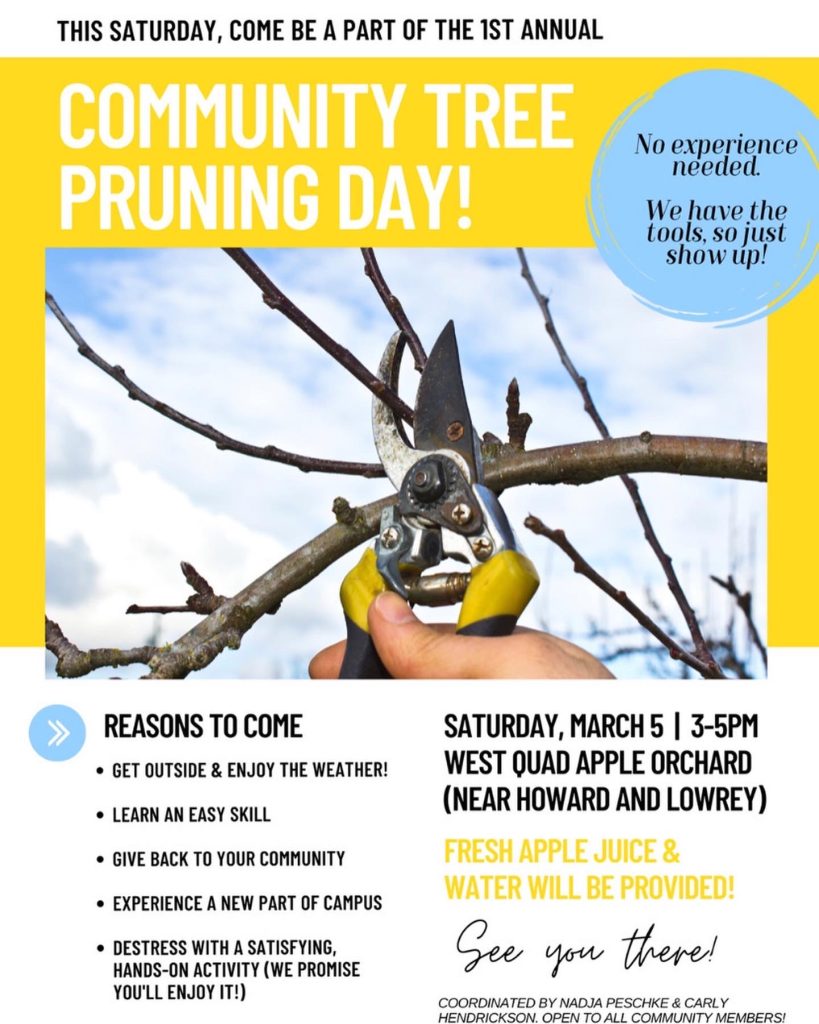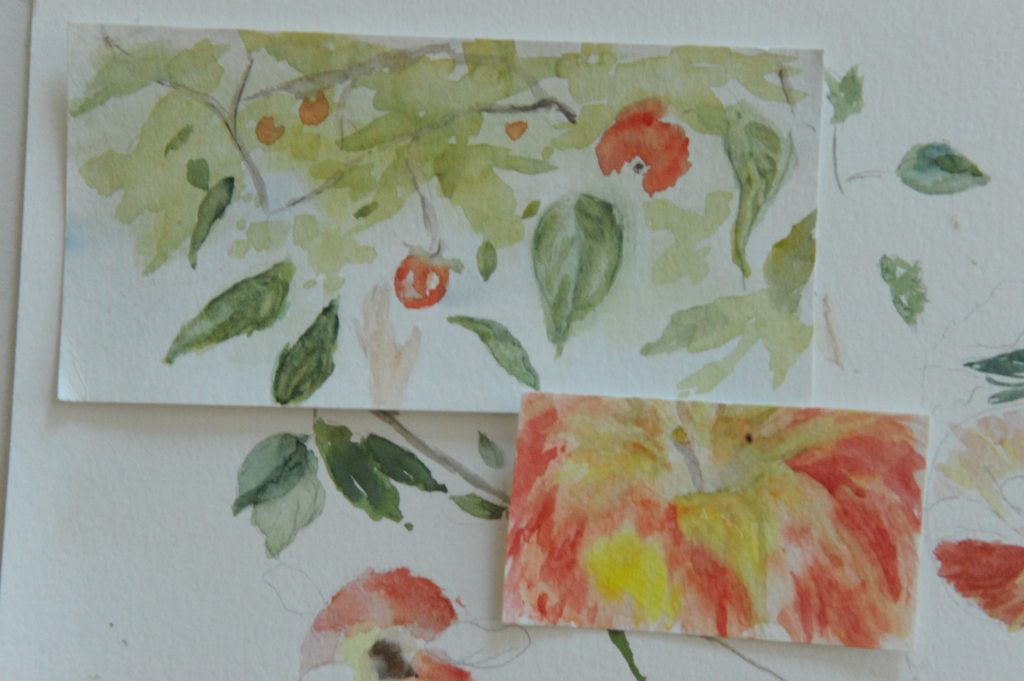By Nadja Peschke |March 30, 2022 Principia Center for Sustainability Special Projects Officer
It came to my surprise my Sophomore year, how few students and professors knew about the West Quad apple orchard. Every time I walked from the concourse to my dorm or Voney studio, I stopped to marvel at the wealth of ripe apples suspended in the sunshine above my head. I would snag the apple picker from Howard House’s porch (thank you, Kemi!) and pick apples while other students receded back to their rooms for an afternoon nap or homework session. It felt like stealing gold.
The juicy weight of the fruit sagged the branches so low that my 5’ 3” frame could snag a snack and be on my way. It was my Eden when the Red Delicious apples shipped from the industrial orchards of Washington State to the Scramble Room just didn’t taste right. Did you know that “Red Delicious” is not a naturally derived apple variety? It was created in a lab to be a productive monocrop. Consequently, it’s pretty flavorless compared to our campus Jonafree apples.
I made an effort to bring my friend circle into the bounty. We would pick a box full and make applesauce, or keep the apples in a cold spot in our rooms to enjoy for weeks on end. The taste was tart, sweet, the texture was crisp, the sound of a bite was snappy. I grew a habit of always having two in my tote bag, one for me and one to share. My little Johnny Appleseed act still wasn’t enough to get all students on board, some even seemed dubious that they were edible! This caused me to wonder how our society came to trust fruit in a basket more than fruit in the fresh air? I digress.
Senior year, I once again looked forward to this early fall treat but was greeted with tired trees, yellowing leaves, and more rot than apple. How did this happen? According to pomologists, pom (fruit bearing) trees need to be trimmed and maintained. A lot of orchardists share a phrase that the trees’ branches should allow a cat to be tossed straight through the canopy without touching a branch!
Reflecting on the scraggly, tangled limbs I immediately knew the year’s pickings had something to do with the maintenance of our beloved trees. The extra limbs were stealing energy from the possible production of fruits. These limbs start as vertical growing twigs called watershoots, or suckers, and if not groomed from the start they become mature branches that make a bushy canopy. Some of the trees on campus I even call willow apples because they sag so low with watershoots.
During February and March 2022 I led a pruning crew to help our apples thrive in 2023. Here are a few tips from Dr. Chrissy McAllister, bio professor, who met me to discuss pruning. It turns out that there are three stages to pruning a tree: Clean Up, Thinning Out, and Shaping;
- Clean Up consists of noting dead vs
- To Thin Out the tree, check for the culprit: watersprouts. These are new growth that grows at a 90-
- The Shaping portion is easier with younger trees, this allows the choice of how the tree will grow. An apple tree should have a broad canopy that reaches out more than up. Trimming the branches out of reach ensures more apples where we can pick and enjoy!
At most, only about 20% of a tree should be pruned a season. Watch out not to cut branches with abundant spurs, these are the pointed buds that will blossom and become the fruit. But the more you remove distracting or unhealthy limbs the more you can direct a tree’s energy to be fruitful. Ultimately, you can’t hurt the tree by following these tips! This is a yearly maintenance for most fruit trees like pears, peaches, and plums. Always double check with a trusted source for your type of fruit tree but tending to them is responsible and ensures the longevity of your trees.
The orchard has blessed our Principia community for nearly 100 years, and by tenderly caring for it – and enjoying its bounty! – on an annual basis, this beautiful grove will continue to bless students with new skills and many tasty apples as our orchard grows. Next fall when you walk through the Quad, take a seat on the new benches we added in the quad to breath in the beauty of the orchard, birdsong and pick a few apples. If you’d like to get involved in orchard care, contact the college’s Center for Sustainability!
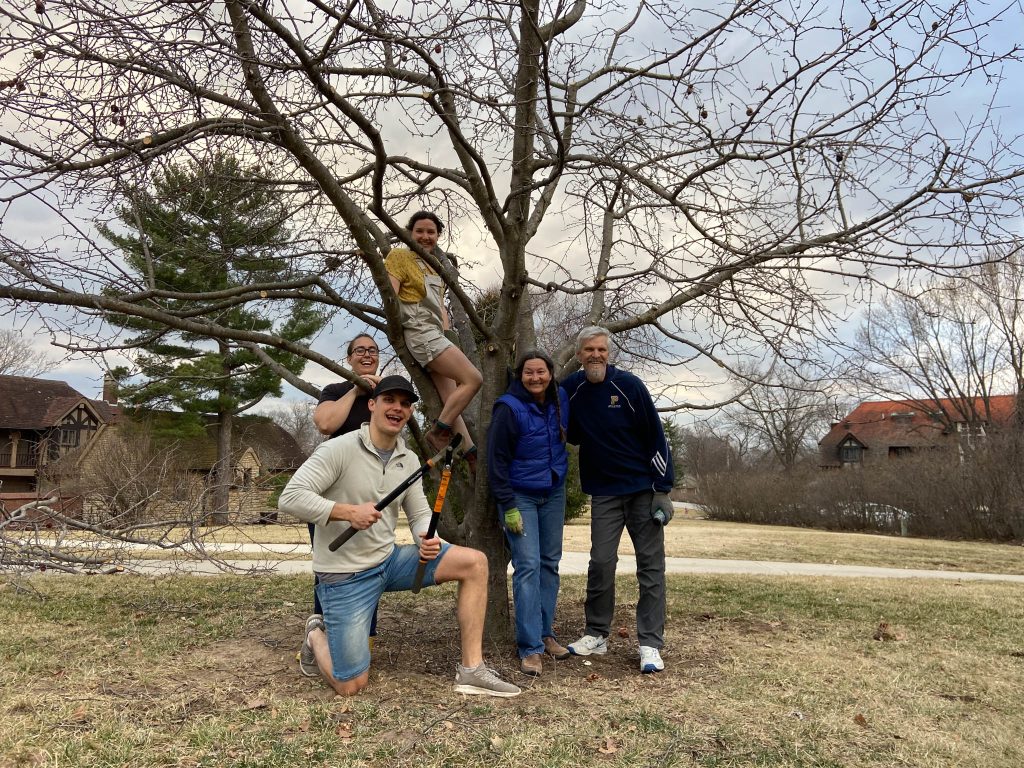
All Photos Credited to Nadja Peschke.

